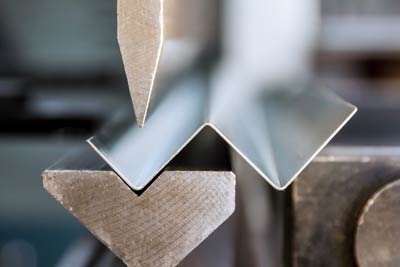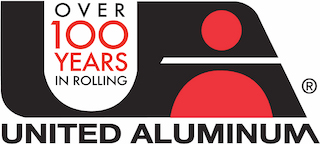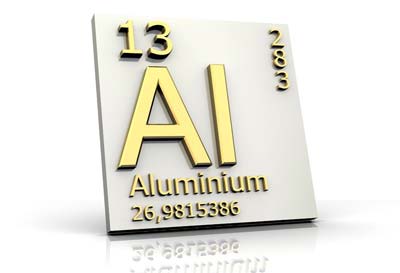The first value in the four-digit number indicates the primary alloying element group it belongs to. For example, for Alloy 5183, the “5” indicates that magnesium is the principal alloying element. The second number, for example the “1” in 5183, tells you it is the first modification to what was originally 5083. The last two numbers (“83”) indicate the sequence the alloy was created within the 5XXX series.
Here are summaries of the groups, principal alloy elements for each, common alloys in that group, and some information on typical uses and formability:
1XXX Principal Alloying Elements: Unalloyed
 Alloy 1100 (Aluminum purity 99% or greater) is one of the most widely used alloys, with excellent forming properties, especially in the fully soft, annealed temper. It may be suitable for applications that require bending, spinning, drawing, stamping, and roll forming. It has good thermal conductivity and is often used in heat exchangers and as heat sinks in electrical applications.
Alloy 1100 (Aluminum purity 99% or greater) is one of the most widely used alloys, with excellent forming properties, especially in the fully soft, annealed temper. It may be suitable for applications that require bending, spinning, drawing, stamping, and roll forming. It has good thermal conductivity and is often used in heat exchangers and as heat sinks in electrical applications.
Alloy 1350 is widely used in applications where good electrical conductivity is required. It has an aluminum purity of 99.5% or higher with tight controls on certain impurities that could adversely affect conductivity.
2XXX Principal Alloying Elements: Copper
Alloy 2024 aluminum is heat-treatable aluminum alloy with copper as the primary alloying element. It is malleable when in the fully soft, annealed temper and can be heat-treated to high strength levels after forming. Due to its high strength-to-weight ratio, it is widely used in aerospace applications.
3XXX Principal Alloying Elements: Manganese
Alloy 3003 is a widely used medium strength aluminum alloy with manganese as its primary alloying element. It has good formability, and may be suitable for applications that require bending, spinning, drawing, stamping, and roll forming.
Alloy 3005 is an aluminum alloy with manganese as its primary alloying element, supplemented with a magnesium addition which makes it stronger than 3003 alloy. The 3005 supplied by United Aluminum has good formability and a very fine grain structure.
5XXX Principal Alloying Elements: Magnesium
Alloy 5005 is a medium strength aluminum alloy with a small amount of magnesium as its primary alloying element. It has good formability and may be suitable for applications that require bending, spinning, drawing, stamping, and roll forming. It is often used for applications that require an anodized finish.
Alloy 5052 is an aluminum alloy with magnesium as the primary alloying element, supplemented with a small chromium addition. It has good formability when in the fully soft, annealed temper and can be work-hardened to fairly high strength levels. It is commonly used in a multitude of engineering applications.
Alloy 5657 is made from high-purity aluminum (>99.85% Al) with a small amount of magnesium addition to increase its strength. It is intended for applications that require a bright finish attained by chemical or electrochemical brightening. The brightening characteristics are poor when the alloy is in the fully soft, annealed temper so it is not usually supplied in that temper.
Alloy 5754 was a common European alloy often designated “AlMg3” and is now often specified for applications in the USA. It is an aluminum alloy with magnesium as the primary alloying element, supplemented with small chromium and/or manganese additions. It has good formability when in the fully soft, annealed temper and can be work-hardened to fairly high strength levels. It is slightly stronger, but less ductile, than 5052 alloy. It is used in a multitude of engineering and automotive applications.
6XXX Principal Alloying Elements: Magnesium and Silicon
Alloy 6061: The combination of magnesium and silicon in 6061 aluminum allows it to be heat treated to higher strength levels. It has good formability when in the fully soft, annealed condition and the strength can be significantly increased following a heat treatment. Originally called “Alloy 61S”, it was developed in 1935. It has good mechanical properties and exhibits good weldability. It is one of the most common alloys for general purpose use. 6061 aluminum alloy can be heat treated.
7XXX Principal Alloying element: Zinc
Alloy 7075 is a heat-treatable aluminum alloy with zinc as the primary alloying element. It has moderated formability when in the fully soft, annealed temper and can be heat-treated to strength levels that are comparable to many steel alloys.

